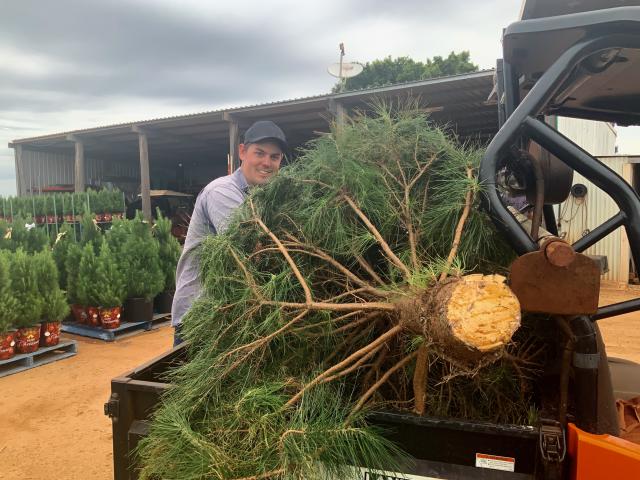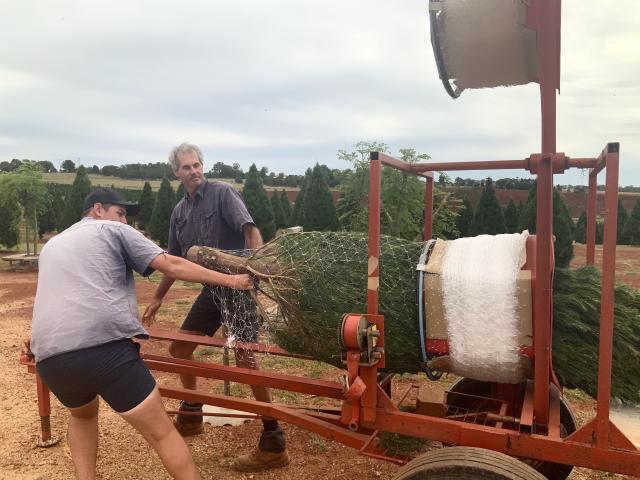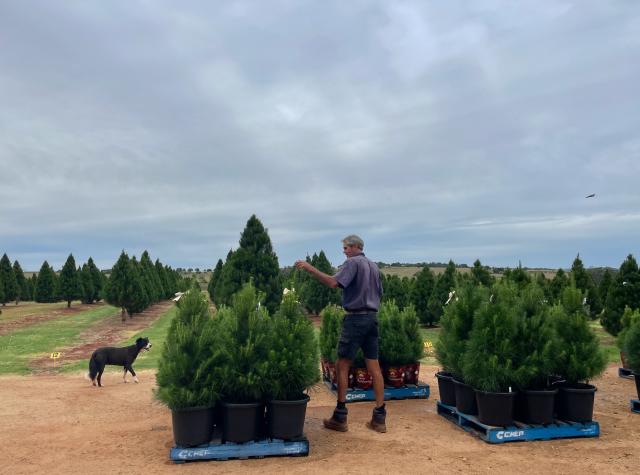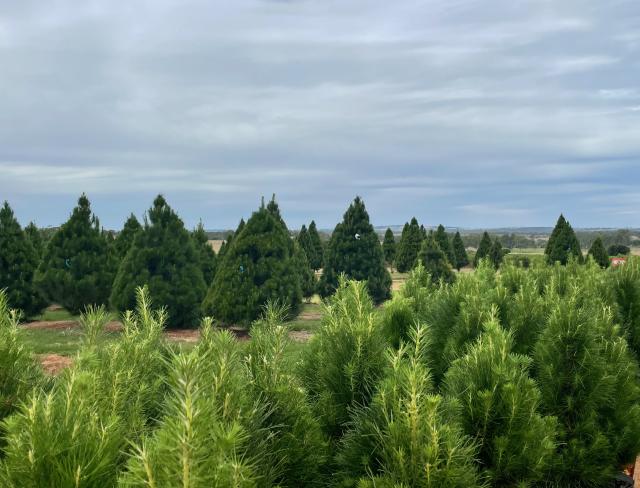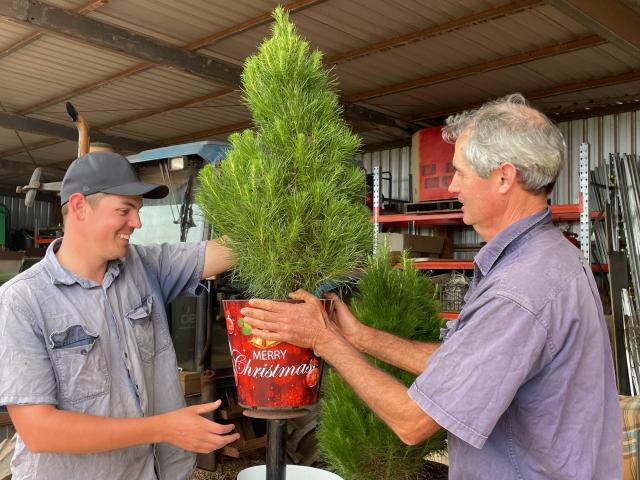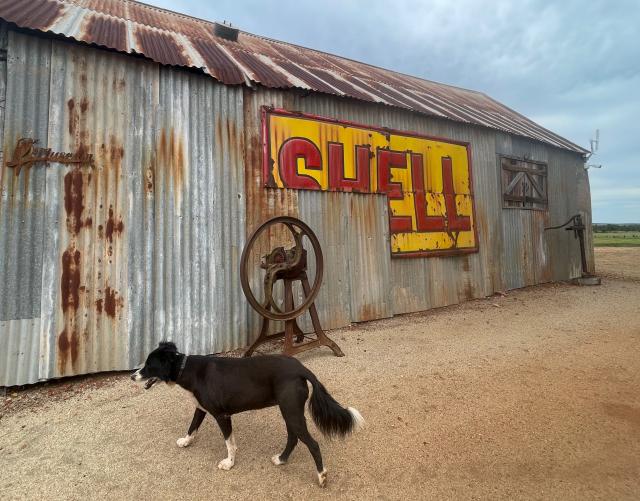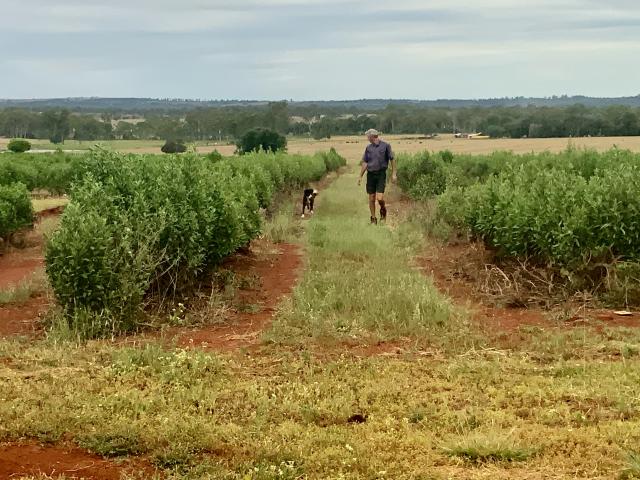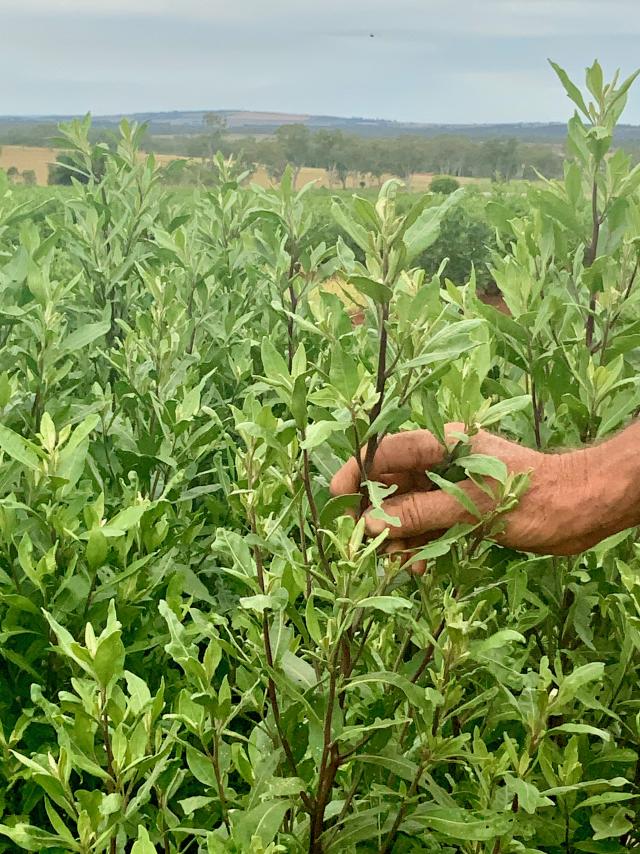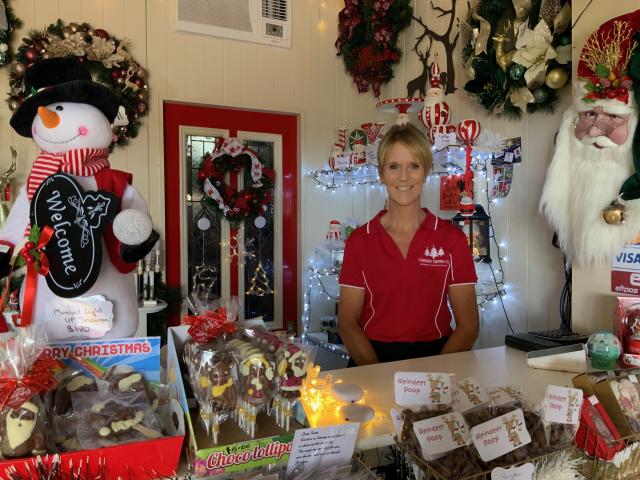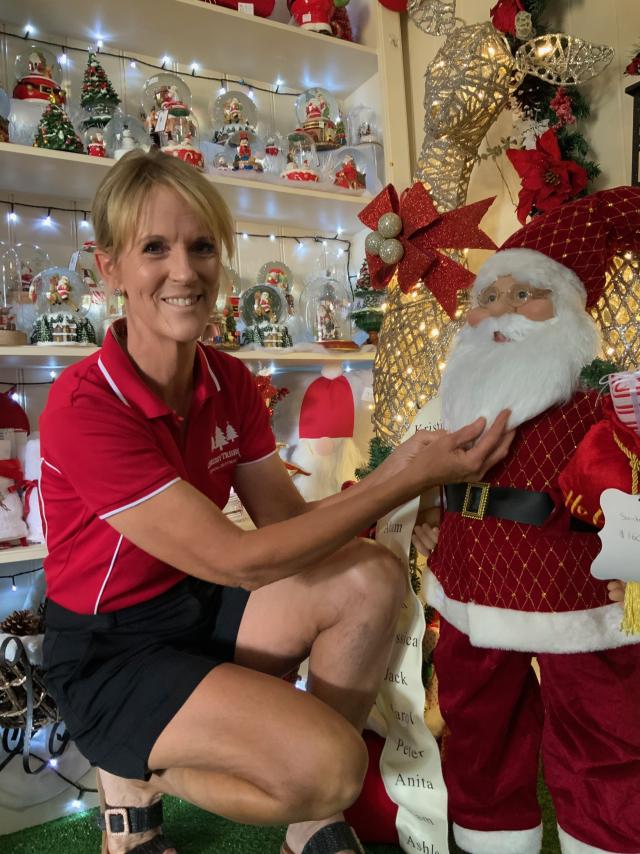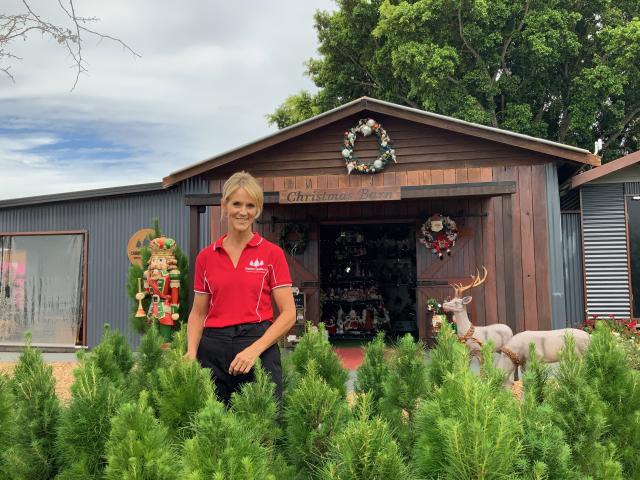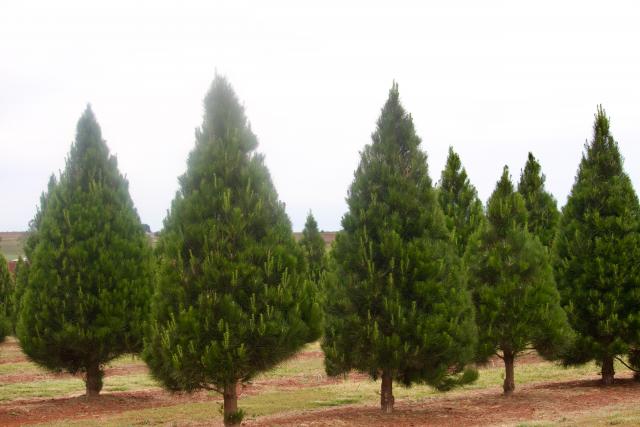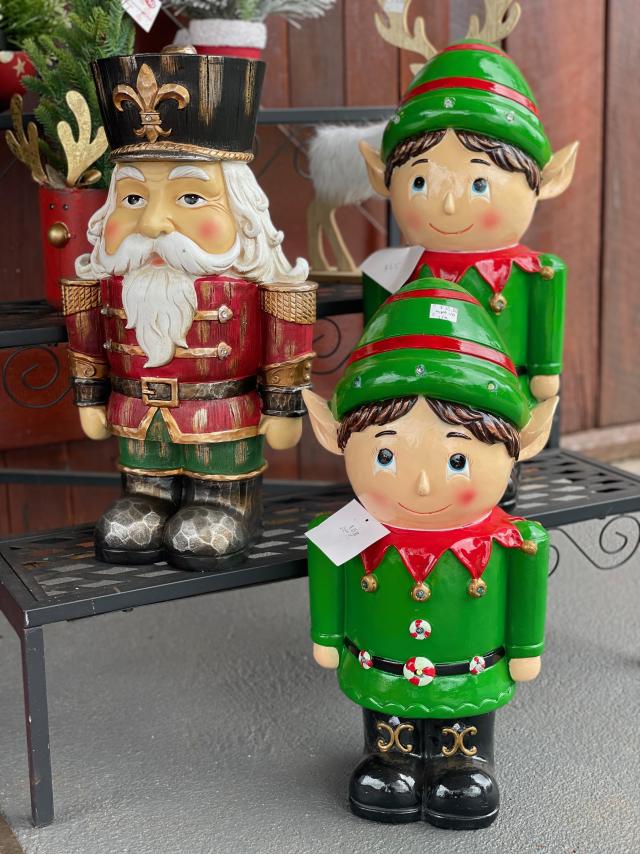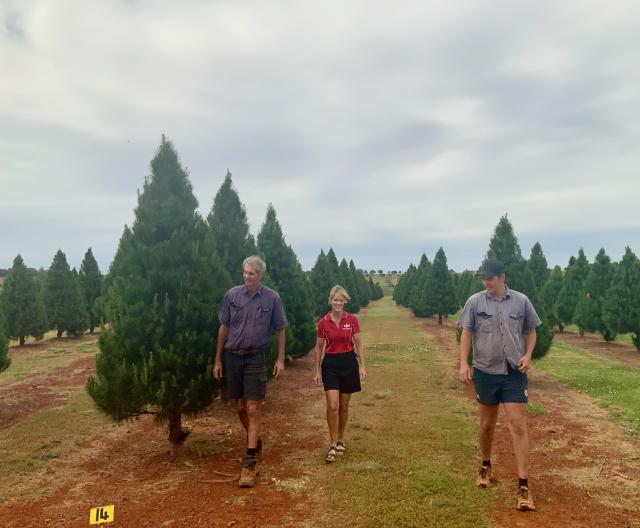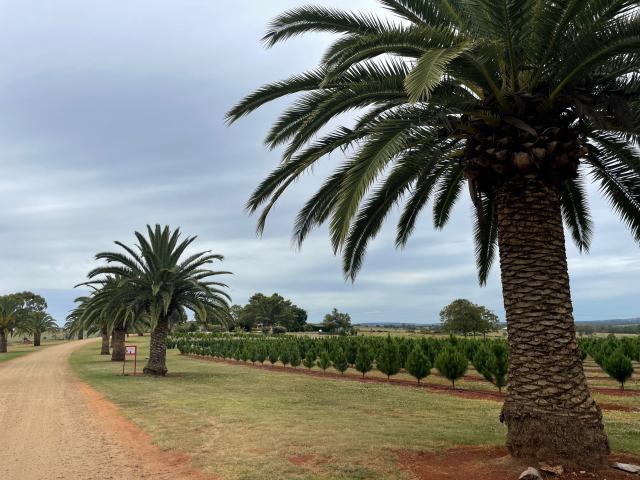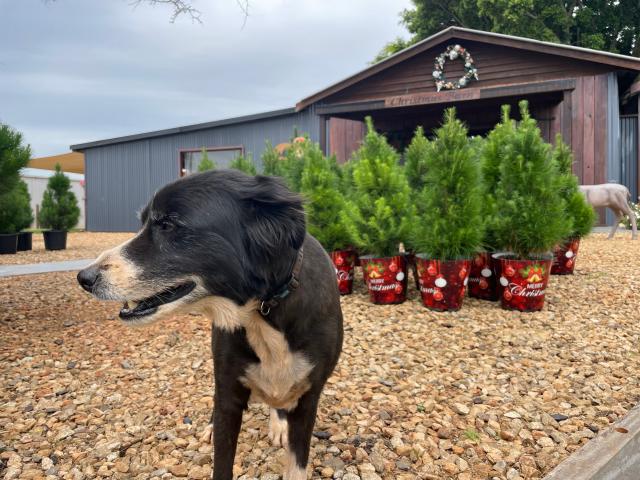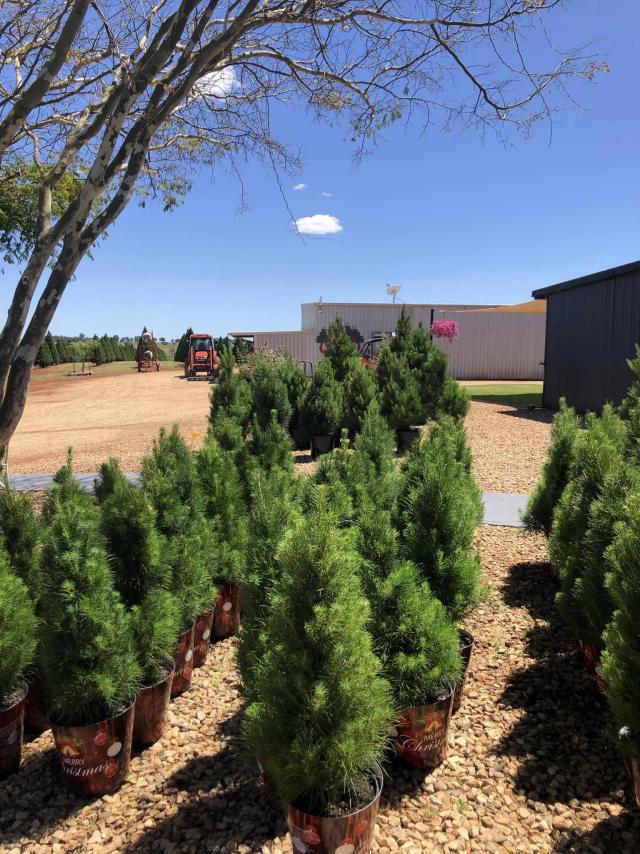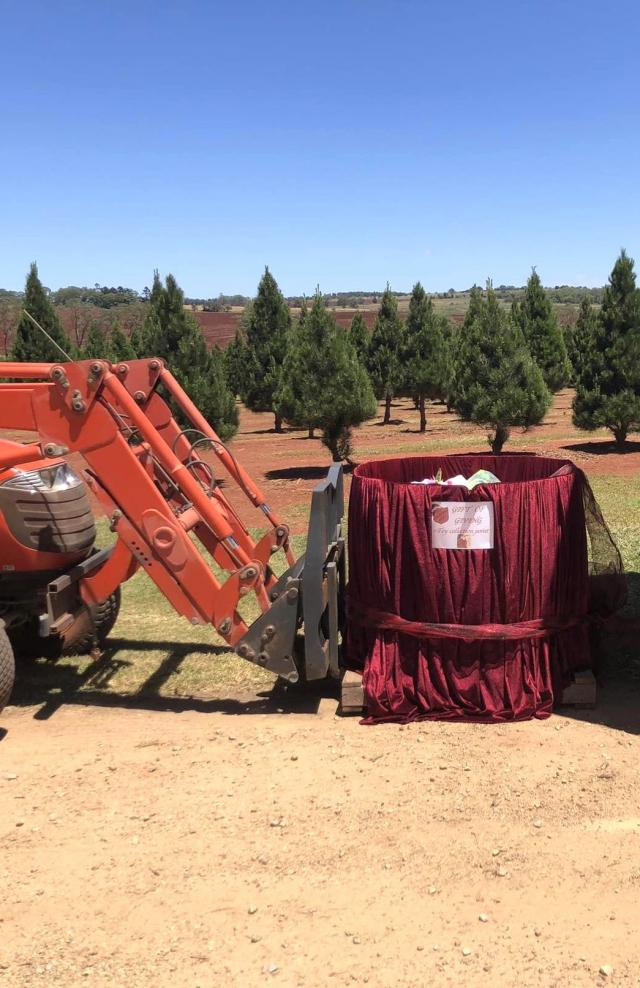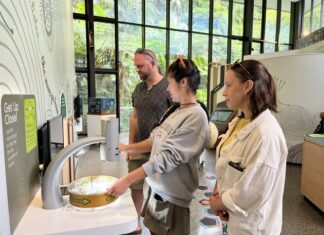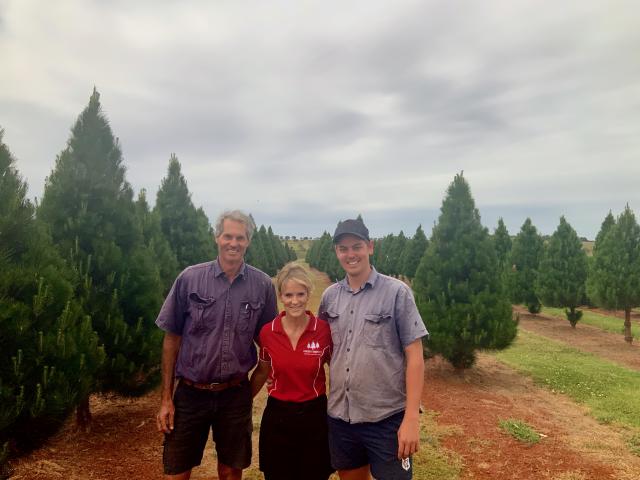
There’s nothing quite like the smell of pine trees at Christmas. ERLE LEVEY is gripped with nostalgia at a South Burnett farm.
“It was something I had to really help Queenslanders understand – that you could have a real Christmas tree here.”
We’ve probably all heard the saying about having kangaroos loose in the top paddock.
But in the case of South Burnett farmers Debbie and Chris Bunker it has nothing to do with having a loose grasp on reality.
Instead, they have found kangaroos using Christmas trees to scratch themselves.
It’s just one of the issues they have been faced with at their Benair property … big male kangaroos who like nothing better than to rub their chest up against the perfectly-shaped pines to get rid of an itch.
In the process the big bucks do quite a bit of damage to the young trees.
Then there is the problem of bandicoots attacking the PVC irrigation pipes and drippers to get an easy water supply and inflicting quite an additional cost.
Yet Debbie and Chris are more than happy to contend with a few native wildlife intruders on their 160-acre property.
At Chrissy Trees 4 U they have planted trees specifically suited to the Queensland climate, and have built up quite a following over the past 15 years.
Those who love the scent of pine or the fun of decorating at Christmas come from a catchment as far afield as Rockhampton and Warwick, Brisbane and Emerald, to choose their tree or picnic in the grounds at the time of harvesting.
Sitting with Debbie at the cafe and the Christmas Barn filled with decorations, she told me about their journey.
As we talked, Chris and Justin, one of their three children, were at work in the shed preparing orders. For late November-early December is rush hour on the farm.
There are about 10,000 trees planted, either in the ground for harvesting or in pots.
Harvested trees are selected and tagged throughout the year, then either transported or picked up at the farm.
Many are dropped at pre-arranged delivery points throughout South-east Queensland, the Darling Downs or Central Queensland.
“The decision to get into Christmas trees was made about 15 years ago,’’ Debbie said.
“My kids were getting through high school and I still wanted to be remain on the farm as a stay-at-home mum but earn an income, knowing that they were going off to uni soon.
“I love Christmas so I researched lots of different things, and I bought up 100 little seedlings as I was allowed a little patch of ground behind the house.
“We worked the soil up and I nurtured each of these little trees for four years.
“I learnt lots in that time, and then took them down to the Gold Coast and Brisbane where we had the trees in garden centres and took orders from that.
“Then we’ve just grown. We sold out and sold out, and kept growing and doubling each year.
“So then we put it online as a store and we now have delivery runs in which we take them to more central places such as Brisbane, Toowoomba and Caboolture and people collect them.
“Two years ago we decided to put the the gift shop in, which is just the fun bit, and then we did the cafe as well.
“It’s because I love Christmas.’’
Debbie and Chris bought the farm 27 years ago and it was a peanut farm with one tree – a jacaranda – and a little old shed.
The jacaranda was all burnt on one side from the sun, so they planted the big palms up the driveway as an entry statement.
“We planted them in the first season and they are just stunning now,’’ Debbie said.
“We brought little pots up from where we used to live and we planted those.
“Chris’s family is all from Redland Bay and we planted the first trees up our driveway.’’
Debbie comes from Central Queensland, at Dysart.
Now at Benair, they are well placed with the Western Downs and Toowoomba, Brisbane, the coastal areas and almost to Rockhampton within reach for customers and visitors.
“That’s the radius we have people come from,’’ Debbie said.
“Like at our pre-tagging weekends, which begin in November.
“We get hundreds. This time we had close to 1000 people come out on that weekend to pick their tree.
“So the picnic areas were all full of people, and they were out picking and tagging their trees.’’
It’s a bit like picking your own strawberries I guess, but this has really grown to a big scale.
Little did Debbie and Chris think it would become this popular.
While the property had been used for growing peanuts and grazing, they had originally been farming ostriches in Brisbane.
“We wanted a bigger property so we could expand – that was going back 27 years – and then we all know what happened with ostriches.’’
Attempts were made to farm ostriches in Australia for feathers and meat, particularly from the 1970s onwards, but many failed.
Debbie and Chris were fortunate enough to get into a growing group for duboisia – small perennial shrubs and trees in which the leaves are used as a pharmaceutical in Buscopan for specialised pain relief.
That underpinned the farm while the Christmas trees were becoming established.
The duboisia plants take at least 12 months before they are ready for harvesting, Chris said.
That is done by machine, and they are taken from the farm as a green-leaf product then dried and processed in the South Burnett.
The idea of growing pine trees was not obvious early on but Debbie just realised nobody grew them in Queensland at the time.
“It was something I had to really help Queenslanders understand – that you could have a real Christmas tree here.
“I just saw there was a huge demand for it.
“This year in particular, because we’ve got so many people from southern states moving up here.
“So the demand is a lot more intense and because it’s something you can’t go to the corner shop for.’’
There was no-one to help Debbie and Chris get started, no-one to help in the preparation and planning.
“It was pretty much trial and error.
“There was no-one with a big secret to go to.
“We wanted to grow the trees and supply them to people.
“There’s so much demand. Everybody who’s ever had a Christmas, a real Christmas tree, they are now hooked on them.’’
While we are talking, you become aware of that distinctive smell of the pine. It’s such a healthy scent.
One of the big tips for trees is to put a sheet on the floor first – perhaps with a green colour – so that all of needles just fall onto it during the Christmas period.
The benefit is at the end of the season you just have this big bag that you can dispose of as mulch or green waste.
Needles can be a reason why people have gone for artificial trees in recent years, especially when time is such a valuable commodity.
Yet Debbie finds that the trees, if you keep the water up to them, stay healthy in Queensland.
“We grow them here and we are trimming them all of the time, so it’s not like bringing out a tree from down south where they’ve come into our heat and they drop needles.
“Here in Queensland, there is very little needle drop.
“You put them in the stand and make sure it stays full with enough water to cover the base of the tree.’’
That takes us to the issue of people putting their trees up early, while others say you can’t do it till December.
“We recommend, because it’s a fresh tree, three weeks before Christmas to keep it beautiful,’’ Debbie said.
“The first weekend in December,’’ Chris suggests. “There’s a chance that it will last till New Year, especially if there is air-conditioning.
“The trees love air-con. So you can get four weeks if it is cared for.’’
Debbie and Chris started potting their variety of pines as no-one was planting this species.
Up until then people relied on Norfolk pines or branches from bigger pine trees.
“That’s where we created the line,’’ Debbie said.
“People would know that by having them in pots they would be able to keep them to a reasonable size, whereas with the Norfolks you had to transplant them at some stage.
“With these you can repot them to the next size each year and you can keep it shaped – every time you shape it, the tree fills out.
“With Norfolk pines you have to keep the main stem but with this one you can trim it at any height to fill up the foliage … to push it up from underneath.’’
The switch to the Christmas trees as well as the duboisia meant Debbie and Chris had to put in underground watering, construct sheds and install solar pumps at the dam and bores in the gully.
“We had to put in the big solar pumps for the underwater mains throughout the whole property, then built sheds for the dispatch sector, the tractors and forklift.
“There was a dam but we put two bores in and we have got natural springs.
“The soil is just amazing and beautiful.
“The thing about red soil is it doesn’t come out if you get it on your clothes … you never wear white.’’
On a farm there are always a lot of insects and pests but it was the bigger native creatures that Debbie and Chris had problems with.
When it got dry they had bandicoots come onto the land – something that had not been an issue before.
“We would have all our potted trees out with irrigation lines and the bandicoots came through every night – and they would rip open and split the irrigation lines.
“Every morning we would be replacing the irrigation lines because they would try and get the water from the drippers.
“We were never able to catch them so the only thing we could come up with was putting the solar lights around our whole area of growing pots.
“Then we had a few male kangaroos, which was very interesting.
“They had an itch so they would grab our Christmas trees and scratch their belly with it.
“That would ruin the tree because at that stage it was as tall as them … they would scratch and scratch.’’
As the business has grown the children have become more involved in the operation, especially approaching December.
They’re there with input on what to do as much as what they get out of it.
“They do they come up with some really good ideas, particularly for fundraisers.
“We do annual fundraisers for different charities each year.
“As an example we had a bale-painting day in which we had huge, big, round hay bales that we donated.
“Businesses or people would pay and then they put their logo with a Christmas theme on it.
“There were market stalls all up the driveway and all of the bales along it – 50 bales got painted and all the money went to charity.
“That time it was Lifeflight – the emergency helicopters.
“This year we did a big one, and it was a different one.
“It was Christmas in July and that was for the Cancer Council.
“We had huge markets again but we sold our places for Picnics in the Trees, so there were families everywhere.
“There were workshops and ugly sweater competitions, decorate the tree competitions. It was a fun day and we raised good money.’’
Another charity event is creating a big watermelon structure and decorating it like a big Santa sack.
People then bring in toys to put into it so they can be donated to the Salvation Army.
It’s the joy of giving.
Many people come just for the decorations and ornaments Debbie has available in the Christmas Barn.
Her favourite is the old-style Santa Claus with his long white beard and spectacles. But there is also a television-style snow dome, which is perhaps the best way to describe it, with Santa reciting ’Twas The Night Before Christmas.
“When people come they get something from the shop as well as picking out a tree.
“Every year they will come and choose one new decoration as a collectable item.’’
What does Christmas mean to Debbie, or what are people saying about the Christmas trees?
“They love the shape … and the memories.
“They come with their kids and grandkids, and they walk around.
“They just pick their own tree and they make it an annual tradition, which is special.
“They’re very excited when they come …. that’s when they are at their happiest.’’
And isn’t that what the festive season is all about – a time to reflect, of being with family and friends, or giving a hand to others.
I remember when we were kids, and on the last day of school we would get off the bus and cut a branch down from up the paddock.
Then we would be busy decorating it with whatever decorations the youngest one had made at school – paper chains, lanterns, a star on top.
Mum would use shaving cream to make it look like snow on the branches.
Things may have changed in some ways through the years but in essence, the experiences remain the same.
It’s a time that holds special memories for many of us.
CHRISTMAS TREE HINTS
When you get the tree home, first re-cut the base by making a straight cut across the base taking 2cm off the stump. This enables the tree to absorb water and maintain its freshness or it won’t last the season.
Fill the stand with water and always keep it topped up. It will require watering each day taking in up to two litres a day, as a guide. If the water drops below the trunk, it will seal itself off and then be unable to absorb water, this will reduce the trees life.
If this happens and the tree stops using water, cut a further 2cm off the base of the stump to enable the tree to absorb water once again.

